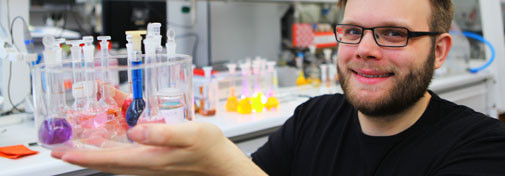Early diagnosis of strokes and cancer possible using new method

Researchers have invented a compound that measures oxygen in cells and other biological material with high precision to give an early diagnosis of serious diseases.
Lack of oxygen in cells is an indicator of cerebral haemorrhages, stroke and cancer. Commercially available oxygen-meters are based on technologies not suitable for the lab and incapable of pinpointing the oxygen in a cell.
The proof-of-concept technique developed by a chemist from the University of Copenhagen in collaboration with chemists from Oxford University, is capable of measuring oxygen concentrations in an easy, quick and cheap manner.
With the microscope work done already, and capabilities of synthesising the rare earth containing molecules improving, the method should soon be commercially available.
Thomas Just Sorensen, associate professor at the Department of Chemistry, Nano-Science Centre, University of Copenhagen and his Copenhagen partner, Tom Vosch, along with the Oxford team have published a paper on the work in Chemical Communications.
"This is not just a method which is somewhat better. With this method you will be able to see things which used to be beyond measure. One example would be the difference in oxygen concentration inside and outside a cell," says Sorensen.
The oxygen detecting compound is made of two rare earths (lanthanides) – europium and terbium. Europium emits a constant red signal. Terbium emits a green signal that increases with diminishing oxygen concentrations.
By deducting the amount of red light from the amount of green, a precise reading of the oxygen level can be obtained.
As both colours fall in the visible range of the spectrum, it can be measured using the optical microscopes already present in most hospitals.
The novel oxygen sensitive molecule gives an exact indication of quantity as well as location of oxygen in a tissue sample or inside a cell.
The microscopy technology developed by Vosch and Sorensen utilises near infrared light which is highly compatible with biological studies, as it penetrates deep into the tissue, Sorensen adds.
In earlier experiments as well, light emitting molecules have been used to detect oxygen, but could not tell whether a large amount of light signal was caused by a low oxygen concentration or a large concentration of oxygen sensitive molecules.
This problem has been overcome in the present molecule that comes with a built-in control function.
© Copyright IBTimes 2025. All rights reserved.





















